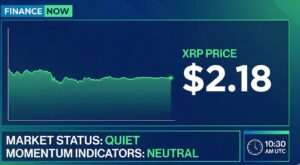Web 3.0 has welcomed a new era that is driving the rapid evolution of technology. In this era, the principles of decentralization and blockchain technology take center stage. However, this significant shift is not limited to technology alone; it also has a tremendous impact on the structure of the governing legal landscape. This legal framework, known as the “Web 3.0 law,” serves as a guide for navigating the uncharted territory of this technology and its effects on the Internet. As businesses increasingly integrate blockchain solutions into their operations, understanding the nuances of Web 3 law is essential. Below, we further highlight key aspects of the Web 3 law.
What Is Web 3.0 Law?
The legal framework developed to control the future of the Internet refers to “Web 3 law,” which is a broad term for it. In the digital age, it is a framework of laws that will safeguard both businesses and consumers. Its purpose is to guarantee that digital assets, such as data and content, are shielded from misuse or illegal access. Also, it ensures that businesses or brands are accountable for their conduct and that customers are able to protect themselves from any form of potential harm.
Scope of Web 3.0 Law
Web 3.0 law encompasses various critical domains, which include:
- Intellectual Property Rights: IP rights, including copyright, trademark, and patent laws, take on a crucial role within the framework of Web 3 law. These rules are designed to protect businesses’ creative works and assets, giving fair protection from unfair exploitation.
- Privacy and Data Protection: Regulations addressing the crucial data protection and privacy issues are part of Web 3 law. Businesses always have to protect customer data and obtain permission before sharing it with outside parties. A crucial component is adhering to data protection, disposal, and retention laws like the General Data Protection Regulation (GDPR).
- Cybersecurity Framework: The legal framework includes provisions to protect against online dangers like ransomware and data breaches. This broad aspect of the law plays a crucial role in defining strategies for protecting digital networks from breaches as well as establishing rules for the strategic and practical reaction to attacks, should they occur.
- Emerging Technologies: Overall, Web 3 law goes beyond boundaries set to include rules relevant to cutting-edge technology like artificial intelligence. These rules are designed to support businesses’ ethical and responsible adoption of new technology.
Conclusion
Web 3 law marks a significant turning point in the development of the legal framework supporting the Internet’s future. This framework safeguards businesses looking to preserve their digital assets while also providing customers with the necessary tools to defend themselves from harm. As a result of their potential to have major effects on operating models, these regulatory frameworks are unquestionably essential for companies to understand well.




























